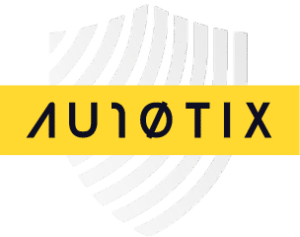While we all know what ‘money’ is, and while so many of us indulge in the pleasure of repeatedly ‘doing the laundry,’ when it comes to ‘money laundering,’ how much do we actually know or understand about its process, its performance – and its perils? For the most part, we read about money laundering schemes gone bad in the newspaper, and it continues to be excellent fodder for popular TV crime shows and blockbuster movies on the big screen.
Perhaps its on-screen popularity is that, in real life, laundering money isn’t always attributed to the underworld, hardened criminals or well-established organized crime rings. In fact, money launderers who are often under the radar, are cash-based businesses you probably frequent in your neighborhood. Yes, right up the street, be it a car wash, convenience store, or your local flower shop. While the vast majority are legitimate, these and similar small businesses are frequently set up to front large-scale money laundering operations.
But how would you or could you single out or blow the whistle (if you dared) on an illicit business? For starters, let’s take a closer look at money laundering, what it is, where it lives, and how you can prevent it from infiltrating your business or organization.
So, what is money laundering?
As its name implies, money laundering is the act of ‘cleaning dirty money.’ Although this definition may sound trite, it is the unlawful process of making exorbitant amounts of money by means of illegal activity. But it’s also about concealing the real source of illegitimate proceeds, and that these ‘reams of cash’ appear to have come from honest and ‘clean’ sources. The nesting ground for serious crimes, including fraud, corruption, drug trafficking, and extortion, the money from these activities is considered dirty, and the process “launders” it to make it look clean. By passing money through complex transfers and transactions, or via a series of businesses across the street, or across the globe, the money is cleaned, and in most cases, without a trace of its illegal origin.
6 common examples of money laundering
While different types of criminals may resort to a variety of tactics to hide their newly-acquired ‘stash,’ money laundering can be best understood via the examples below. However, a comprehensive money laundering operation can also include one or more of the activities below, just by moving money around so fast and so far, it’s bound to remain undetected. For example, illegal earnings from a cash business can be gambled away, invested, or conveniently relocated into an offshore bank account.
- Structuring. As the name suggests, it’s when a criminal configures or divides up large amounts of money into smaller portions, so that their financial transactions won’t arouse suspicion, and have a better chance of going undetected.
- Round Tripping. A popular scheme, here, funds literally ‘travel’ to a combination of bank accounts, individuals, offshore companies, or countries with little or no regulations prior to returning back to their original owner, squeaky ‘clean.’
- Cryptocurrency. Often, the preferred choice for criminals, virtual currencies, such as Bitcoin, are not yet fully or strictly regulated across the globe, where they’ve become an easy means of laundering money, without catching the attention of banks or regulators.
- Trade-based. Countless money launders choose the easy route, and that’s by simply readjusting, aka, changing the legitimate product prices on a given invoice, especially those that go through several hands or businesses to reach their end customer.
- Online Gambling. Cash, and reams of it, travels indiscriminately via online gambling, making it a very popular spot for easy money laundering. Online casinos, for example, are the ideal platform where digital players can quietly move funds from one to another, without (if they’re smart) getting caught.
- Reselling assets. Criminals can purchase luxury cars, boats, homes, or costly electronics using cash and then sell them again, for cash, at a significantly higher price, and pocket the illicit profits.
What are money laundering regulations?
Money laundering regulations refers to all government legislations and regulatory policies, procedures, and processes that aim to effectively prevent and control money laundering on a global scale. Regulations differ from country to country however, they are all intended to deter fraudulent activity, and financial crimes. Government-owned local and global institutions, specifically, financial institutions, were established in the US as far back at the 1970s, to put regulations in place to closely monitor money laundering, illicit money transactions, and other financial crimes. Stringent money laundering regulations typically include procedures such as KYC (Know Your Customer), CDD (Customer Due Diligence), and EDD (Enhanced Due Diligence) to drill down even further into illegal criminal activities.
How can money laundering affect your business?
No matter the size, scope or nature of your business, you, your employees, and your entire operations can become part of a money laundering scheme. Bar none, money laundering diminishes not only your own business integrity, but that of your entire supply chain – your vendors and your customers. Without your knowledge, your once good name and reputation are now aligned with criminal activities, resulting in often irreparable damage brought about by government authorities, your financial institution, or worse – your own customers. Money laundering is the bread and butter of organized crime, and can potentially trap you and your business into illegal acts of bribery, falsifying sales records, income or revenue statements, and other criminal activity.
How can you prevent money laundering in your own “back yard?”
While the means to combat any illicit activity may be to ‘nip it in the bud,’ when it comes to money laundering, the best way to prevent it from infiltrating your business, is first, transparency, and second, having processes in place that ‘alert’ you on suspicious or fraudulent activity. For starters, you should adhere to government and financial institutions’ regulations, and maintain regular, open-door communications with both entities, to identify potential breaches and take appropriate action – fast. You should also protect your financial operations with advanced technologies, such as AI, to view and gain insights into data analytics, and to determine irregular or questionable patterns in your company’s finances. Another way to help prevent money laundering is to replace your legacy software with an advanced business management system. Today’s typically cloud-based systems offer highly secure platforms where your sensitive customer and business data is (we hope), out of reach for money laundering activities.
What is AML (Anti-Money Laundering)?
Anti-Money Laundering, commonly referred to as AML, covers the gambit of activities that government organizations, and financial institutions perform to achieve regulatory and legal compliance. This is done by monitoring and reporting on suspicious or irregular activities, and is essentially how both entities proactively fight against money laundering, and other financial crimes. Common AML regulations, procedures, and processes, albeit, at varying levels, are designed to prevent criminals from concealing funds that were obtained illegally, and can include:
- KYC. The #1 AML best practice for financial institutions, KYC – Know Your Customer, requires verifying customers’ identities by collecting detailed customer information, thereby reducing the risk of stolen credentials, or potential money laundering schemes in operation.
- CDD. An integral part of the overall KYC process, CDD – Customer Due Diligence, helps to ensure that the information provided by a given customer, is both correct, and genuine. CDD is a continuous process carried out by financial institutions to evaluate the potential money laundering risks from not only new, but older customers, and their financial transactions over time.
- EDD. Enhanced Due Diligence, EDD, takes AML best practices on step further in high-risk scenarios, be it potential money laundering activity or even financing terrorist organizations. If information reveals or suggests that a customer is high-risk, the EDD procedure is performed using a set of variables to obtain specific information, from name and date of birth, to the source of funds in question, reason for the transaction, and verifying other official documents.
One thing we know for certain, money laundering is in it for the long haul – it is here to stay. While there are no surefire ways to prevent it, governments, financial institutions, from banks to credit unions, and businesses like yours, must always be primed and ready to face – and fight potential money laundering operations. Financial institutions have made great strides in stopping money laundering operations in their tracks, but most businesses find it challenging to implement and maintain compliance standards. Avoiding money laundering requires a veritable mix of techniques and tactics, and it all starts with transparency, and keeping your business information, clean, safe, and secure. This is the first step in helping to safeguard your company, and your customers against fraudulent conduct.






